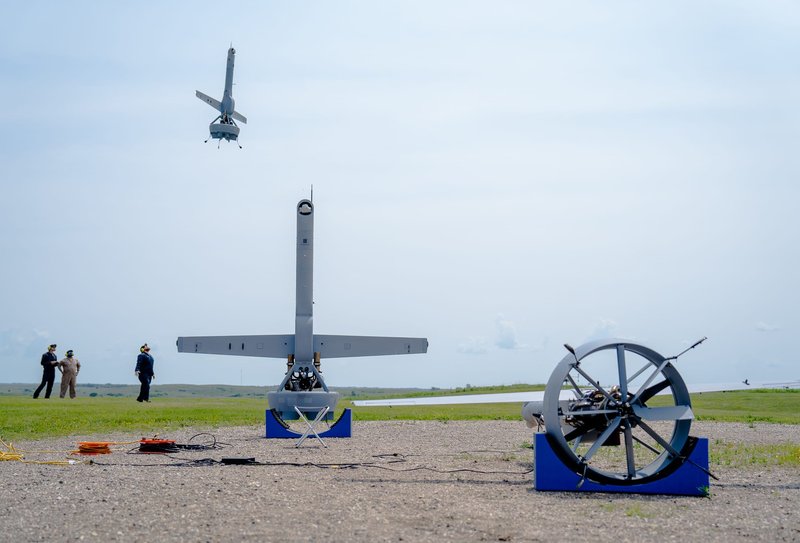Shield AI successfully demonstrates autonomous teaming with V-BAT UAS
Shield AI has completed an autonomous teaming demonstration using three V-BAT UAS. (Photo: Shield AI)
The demonstration was the final milestone of the innovation arm of the Department of the Air Force (AFWERX) autonomy effort under its Strategic Funding Increase programme and in collaboration with the Air Force Research Laboratory (AFRL) Sensors Directorate.
Shield AI used its Hivemind AI pilot to launch a team of three V-BATs to monitor and surveil simulated wildfires. The multi-agent, coordinated team conducted detect, identify, locate, and report (DILR) missions in a contingency scenario with dual-use applications.
This work with AFWERX sets Shield AI on a path to deploy V-BAT teaming capabilities in GPS- and- communications-denied environments in 2024.
Related Articles
Shield AI, Sentient Vision collaborate on AI-enabled wide-area imagery
Shield AI’s president Brandon Tseng said: ‘Intelligent, affordable mass that can see everything on the battlefield, execute the mission even when GPS and comms are denied or degraded, and put all our adversaries’ military assets at risk at all times is the Holy Grail of deterrence. This milestone brings us closer to achieving that reality.’
‘We had many customers from across the DoD enterprise attend the event and my favourite customer quote was “Wait, you’re flying those three aircraft, doing the recon, and at the same time briefing us?”’
Hivemind can be trained for a variety of missions and its modular open systems architecture enables portability to other aircraft. It has flown quadcopters, V-BATs and jet aircraft.

V-BAT teaming capabilities in GPS- and- communications-denied environments are expected to be deployed in 2024. (Photo: Shield AI)
According to the company Hivemind can be trained to undertake a range of missions, including integrated air defence breach, SCUD missile hunting, zone reconnaissance, counter-air, beyond-visual-range strike, maritime domain awareness and communications-contested operations.
AFWERX prime division chief Col Tom Meagher said: ‘What’s exciting to us is not just the capability that teaming V-BATs can bring to the table or how it’s on a great path for fielding with DoD partners, but how autonomy stacks can be leveraged across different aircraft and programmes.’
‘The continual application of autonomy from small systems, now V-BAT, and onto larger platforms provides paths for industry progression and autonomy maturation.’
Related Programmes in Defence Insight
Future Tactical UAS (FTUAS) (Increment 2) [USA]
Related Equipment in Defence Insight
More from Air Warfare
-
![Paraguayan Air Force receives four A-29 Super Tucano aircraft]()
Paraguayan Air Force receives four A-29 Super Tucano aircraft
Six Super Tucano aircraft were ordered in July 2024, with Paraguay the fifth South American country to add the aircraft to modernise its fleet.
-
![US budget boosts Boeing’s F-15EX with $3.1 billion investment to increase fleet to 129]()
US budget boosts Boeing’s F-15EX with $3.1 billion investment to increase fleet to 129
The F-15EX Eagle II had already been singled out for further funding in January 2025, when it was chosen to replace the A-10 aircraft for the US National Guard.
-
![Spain earmarks $1.6 billion for Hurjet trainer aircraft acquisition]()
Spain earmarks $1.6 billion for Hurjet trainer aircraft acquisition
Spain’s Defence Minister told the Senate Defense Commission on 27 June of the decision to acquire Turkish Aerospace Industries’ (TAI) trainers as the country seeks to replace its Northrop F-5M aircraft.
-
Leonardo’s Proteus structural tests “nearing completion” ahead of first flight
The company has tested over 15 mission sets for the drone, with the rotorcraft used to demonstrate the viability of armed forces utilising large uncrewed aerial systems’ (UAS) for autonomous missions in the future.























